This article first appeared in issue six of Pip Magazine.
Words and images by Joel Meadows and Dan Palmer of VEG.
Most of our household energy requirements come in the form of space heating, water heating or cooking, with these making up a large percentage of our monthly bill. Rocket stoves are an example of appropriate technology which can cover all of those needs, cost you next to nothing to build, and just a few sticks to run.
Rocket stove combustion systems deserve attention for a few reasons:
- they offer close to complete combustion of the wood, meaning they are hyper-efficient and burn super-clean
- they can reach very high temperatures, and can be hooked up to almost anything we want to use that heat for
- they can use wood typically considered too small to call firewood
- they are easily built from common materials.
That’s right – you can build these systems in a day or two, and then watch them turn twigs into heat far more efficiently than most wood stoves, with far less set-up cost. If you are good at scavenging bits they can cost virtually nothing to build, and when you prune your fruit trees you can get the fuel you need to cook dinner, heat your home, and enjoy a nice hot shower.
HOW ROCKET COMBUSTION DIFFERS FROM NORMAL COMBUSTION
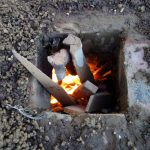 The main difference between a normal fireplace or woodstove and a rocket stove is that rocket combustion is close to complete. When wood is burned it releases volatile compounds that we recognise as smoke or soot or creosote. In a rocket stove these compounds are sucked into the insulated and very hot ‘burn tunnel’ of the unit where they combust, releasing even more heat energy to drive the rocket process, unlike a normal fire where they are blown out the chimney.
The main difference between a normal fireplace or woodstove and a rocket stove is that rocket combustion is close to complete. When wood is burned it releases volatile compounds that we recognise as smoke or soot or creosote. In a rocket stove these compounds are sucked into the insulated and very hot ‘burn tunnel’ of the unit where they combust, releasing even more heat energy to drive the rocket process, unlike a normal fire where they are blown out the chimney.
This distinctive sucking of the flames down into the burn tunnel, and the resultant ‘roar’ is what gives rocket stoves their name. This is also a part of their magic. Rocket stoves are open where the wood is fed in, allowing lots of oxygen to be drawn into the unit. As the fire starts, and the burn tunnel heats up, the rising hot air races up the heat riser, drawing lots of air behind it. This incoming air flows into the feed tube and across the burning wood – creating the same effect as pointing a big air-blower at your fire. It gets really hot, the wood burns beautifully, and you hear the air roaring as it charges through the system.
 In conventional wood stoves the air intake is small, and adjustable to even smaller. This lack of oxygen chokes the combustion, leading to cool burns, incomplete combustion and lots of smoke and creosote. When combustion is complete, what comes out the chimney is pretty much only carbon dioxide, meaning no smoke: smoke means incomplete combustion, unburned fuel, or wasted energy. We are culturally trained to associate smoke with fire; but with rocket stoves, sometimes when there is no smoke, there is still fire!
In conventional wood stoves the air intake is small, and adjustable to even smaller. This lack of oxygen chokes the combustion, leading to cool burns, incomplete combustion and lots of smoke and creosote. When combustion is complete, what comes out the chimney is pretty much only carbon dioxide, meaning no smoke: smoke means incomplete combustion, unburned fuel, or wasted energy. We are culturally trained to associate smoke with fire; but with rocket stoves, sometimes when there is no smoke, there is still fire!
Having ensured complete combustion, and hence maximum heat generation, only then do we think about using the resultant heat. Conventional wood stoves are sucking heat away from the combustion chamber for cooking, space heating or with ‘wet back’ water heaters, meaning the unit just can’t get hot enough for combustion to be complete, resulting in smoke. The combustion chamber of the rocket stove is heavily insulated to prevent premature heat loss, and an enormous amount of heat is generated by the efficient combustion process.
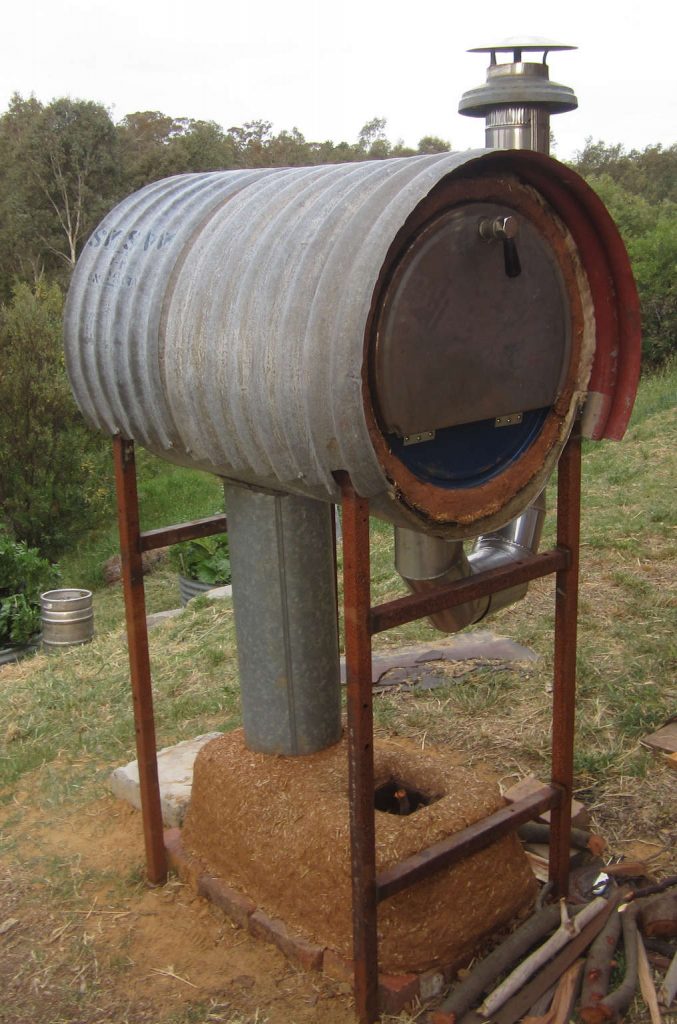
WHAT TO DO WITH ALL THAT HEAT
When combustion is complete, we can extract heat from the stove at the top of the heat riser. And here is where your imagination and inner inventor can run wild: anything you can think to do with very hot air can be done from this point.
Here are a few things that can be powered with a rocket stove.
- Oven – either a converted conventional oven with the rocket under it, or a purpose built barrel oven from old ‘44 gallon’ (around 200 litre) drums.
- Cooktop or BBQ – old cast iron BBQ plates can work well, or heavy copper radiator plates to put pots and pans on, or just cook over the stream of hot air.
- Hot-water systems –we’ve made various systems, from ones that heat a big-vented tank of water with a copper coil running through it, to heat exchanger thermosiphon units boosting solar hot water.
- Space heaters – often seen with an inverted ‘44 gallon’ drum being the main radiator, with the flue running through heavy earth or stone elements (rocket mass-heaters).
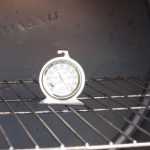
Take care! A well-built rocket stove can work so well it can be dangerous. Dan’s rocket oven once got to 180 °C in six minutes, 230 °C in seven minutes, and 325 °C in thirteen minutes! As for Joel’s latest rocket oven, on his first test run the whole inner skin of the feed tube was glowing red, as was the bottom of the inside of the oven: the thermometer read 350 °C, and the roast vegies were pretty charred (he has since tamed it down to 200 °C).
While quite popular in some parts of the world, rocket stoves are a relatively rare sight in Australian permaculture systems. They are an excellent example of an appropriate technology alternative to conventional means of heating food, water or space; and they are well worth finding out more about.
To read this article and more about alternative technology check out issue six of Pip Magazine.
The Rocket Powered Oven: how to build your own super-efficient cooker by Tim Barker and Illustrated Joel Meadows is now available as an eBook from our online store.
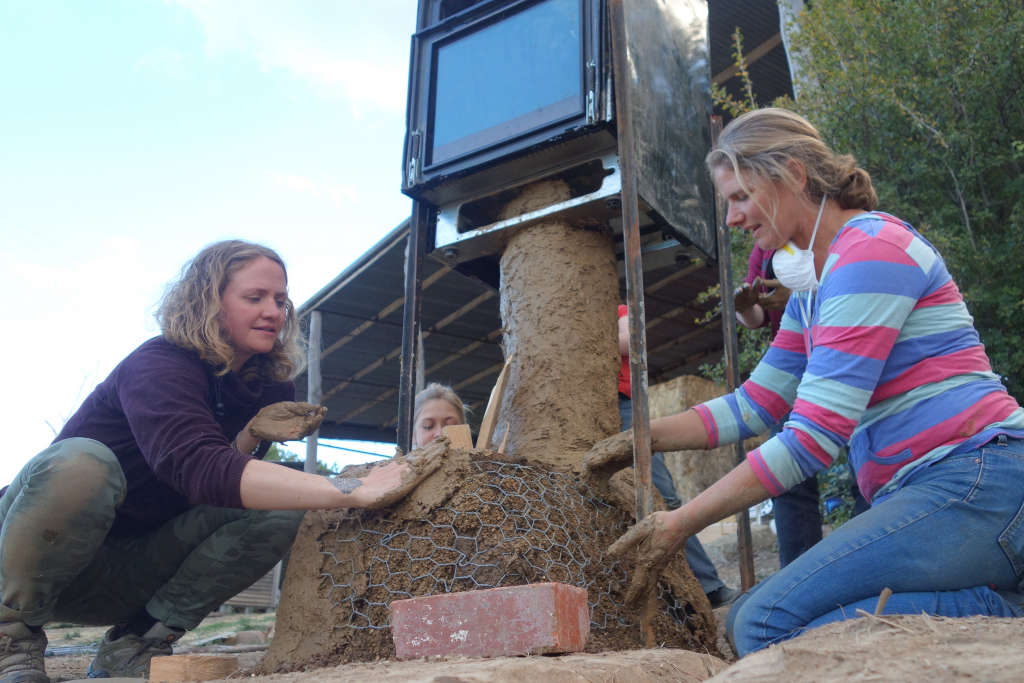

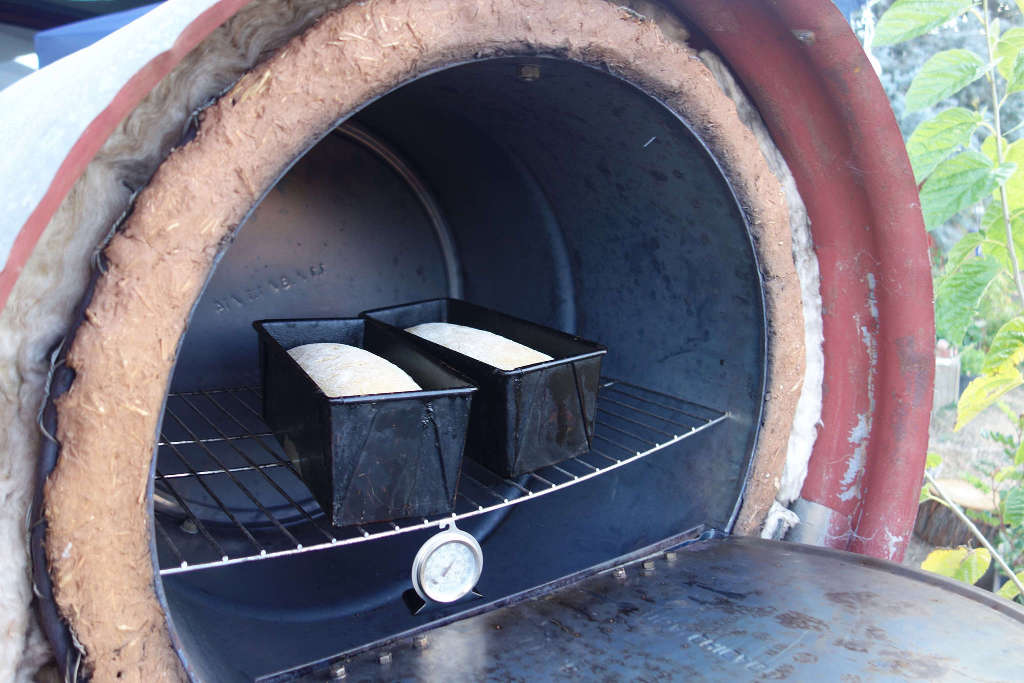
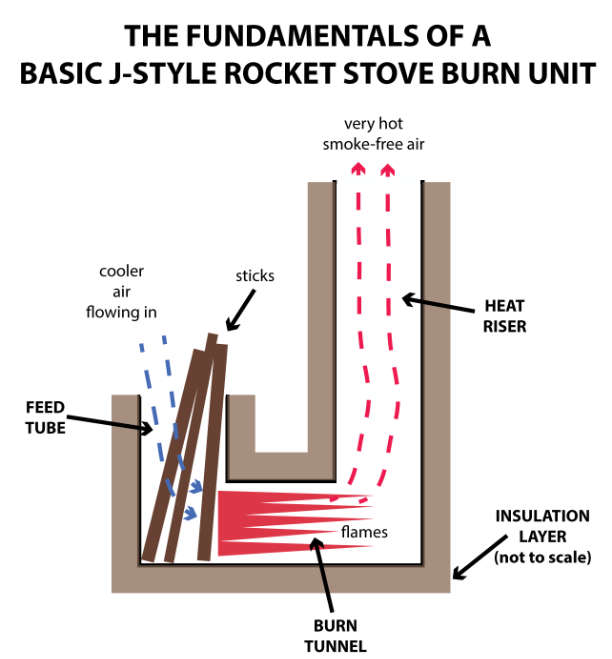
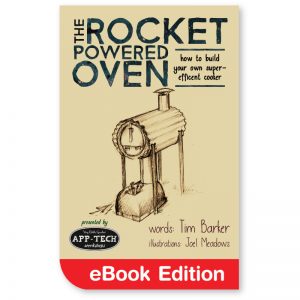





I was blown away by the simplicity and effectiveness of rocket stoves! I never knew that such a technology existed. Your article has really sparked my interest in permaculture and I’m looking forward to learning more about it. Do you have any recommendations on where to start building one?
Here’s a link to the eBook on how to make them. Highly recommended! I made one myself using this guide and it’s still working well after nearly 7 years. https://www.abdallahhouse.com/2019/01/rocket-powered-oven-reflection.html
how you clean stove from ash?
With a ‘J tube’ style design it can be done using a tin can once the ash has cooled.
I’ve been looking for dimensions/specs for rocket heaters.
Such as how long should the burn chamber & riser be and what diameter (I assume they are related).
I’d like to build a large unit for a main room and a micro sized unit for a remote room. Id prefer not to have to figure out the optimum dimensions by trial and error.
I have heard the proportions of 1:2:3 suggested (feed:burn:riser) with the tube being round and big enough that you can easily in it to clean it. In “The Rocket Powered Oven” eBook, Tim says “for a rocket stove to work well dimensions are vitally important”. In his extensive explanation of how a rocket stove works he suggests to keep the feed tube as short as practical, the burn tunnel as short as practical and the heat riser as tall as practical. I’ve built an oven using this guide, and can highly recommend it. It will save a lot of trial and error.
In the farm we have lots of dried coconuts, leaves, wood: is there a design that utilize such fuel sources, e.g. coco drying ….
Can charcoal be used as fuel in a rocket stove
Probably, but why would you bother when you can just use twigs?
a genius rocket stove that produces domestic hot water, underfloor heating, cooking oven and stove, and a warm sleeping couch:
https://m.youtube.com/watch?v=fEr9Vd8Mx38